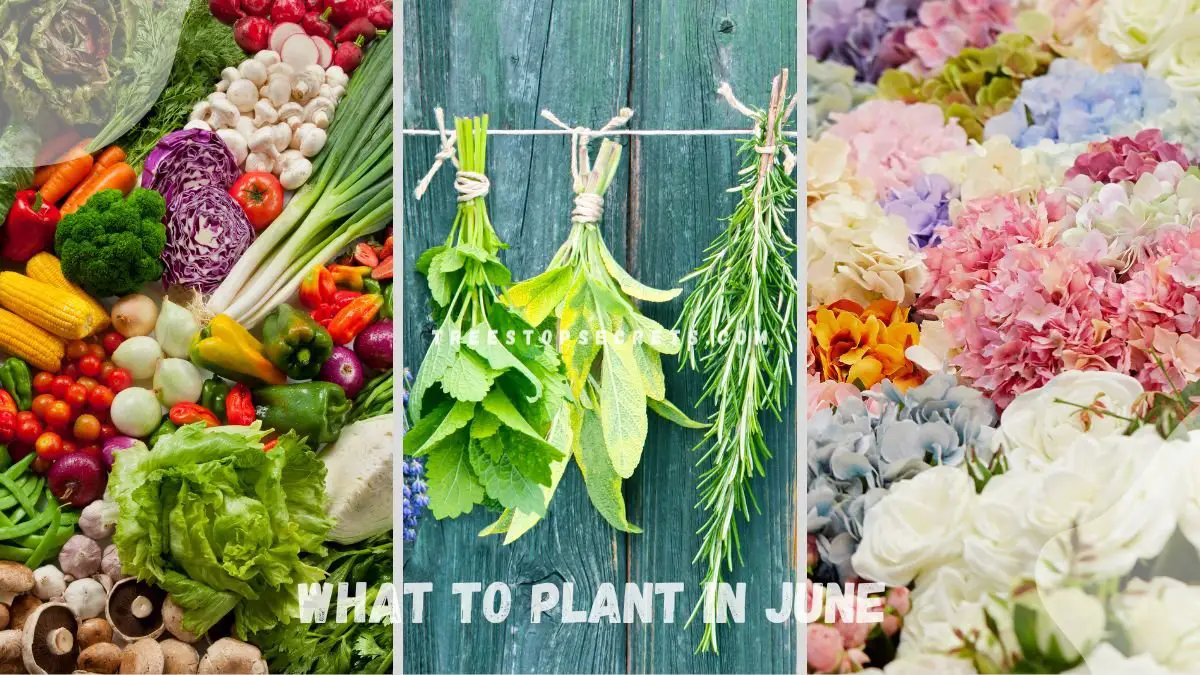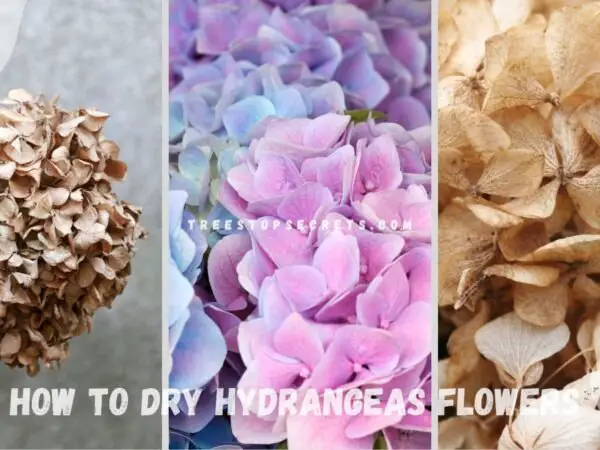Planting in June can be highly rewarding if you know what to choose. Whether you have a sunny vegetable patch or a shady corner, we can guide you on what to plant in June for vibrant summer growth. June is ideal for warm-weather vegetables, colorful annuals, and resilient perennials. You’ll find that even if you’re starting late, there are still plenty of options to help your garden thrive.
In June, gardeners can plant a variety of vegetables, herbs, and flowers. For vegetables, consider planting beans, cucumbers, and squash, which thrive in warmer temperatures. Herbs such as basil, cilantro, and dill can also be sown directly into the soil. Flowers like marigolds, zinnias, and sunflowers can be planted to brighten your garden. Here’s a comprehensive guide:
| Category | Plants |
|---|---|
| Vegetables | Beans, Cucumbers, Squash, Peppers, Eggplants, Tomatoes, Corn, Pumpkins, Radishes, Beets |
| Herbs | Basil, Cilantro, Dill, Parsley, Mint, Oregano, Thyme, Chives, Rosemary, Sage |
| Flowers | Marigolds, Zinnias, Sunflowers, Cosmos, Petunias, Nasturtiums, Impatiens, Celosia, Calendula, Begonias |
These plants will flourish in the warmer conditions of June, ensuring a productive and beautiful garden.
For more advice on how to maximize your June planting, from soil preparation to choosing the right plant varieties, explore our comprehensive guides and expert tips tailored to your gardening needs.
Key Takeaways
- Understand your planting zone to ensure successful gardening in June.
- Choose the best plants for June based on your specific region and climate.
- Refer to detailed guides for planting vegetables in June, such as tomatoes and peppers.
- Consider additional options for planting in June beyond vegetables.
- Tailor your planting choices and strategies based on zone-specific tips for June gardening.
- Take advantage of the optimal planting window in June to grow a variety of plants and enhance your garden.
Understanding Planting Zones
Planting zones, also known as plant hardiness zones, are regions categorized based on their climate conditions and average annual minimum temperatures. These zones help gardeners determine which plants are most likely to thrive in their specific area. For example, Zone 1 typically experiences extremely cold temperatures, while Zones 7 and 8 have milder climates.
Zone 1 Tips
- Consider planting heat-loving crops like tomatoes and peppers to ensure successful growth in the cold climate.
- Water deeply but less frequently to encourage deep root growth and enhance the plants' resilience to harsh conditions.
- Protect plants from intense sunlight during the hottest parts of the day to prevent sunburn and dehydration.
Zones 3 and 4 Guide
- Start planting cool-season crops like lettuce and spinach that can withstand lower temperatures.
- Watch out for late frosts as they can damage tender plants; be prepared to cover them or bring them indoors if necessary.
- Consider using row covers to provide additional protection to your crops and extend the growing season.
Zones 7 and 8 Advice
- Focus on planting heat-tolerant crops such as okra and sweet potatoes that thrive in warmer climates.
- Mulch your garden beds to retain soil moisture in the summer heat and reduce the frequency of watering.
- Water your plants early in the morning to minimize evaporation losses and ensure optimal hydration for your crops.
Best Plants for June
Vegetables to Grow
Radishes
- Plant radish seeds directly into the soil for quick germination.
- Harvest radishes when they reach a suitable size to avoid becoming woody.
- Consider succession planting for a continuous harvest throughout the season.
Beets
- Sow beet seeds directly into the ground for best results.
- Thin beet seedlings to ensure proper root development.
- Harvest beets when they reach the desired size for optimal flavor.
Potatoes
- Plant seed potatoes in well-draining soil with plenty of organic matter.
- Hill up soil around potato plants to protect tubers from sunlight.
- Harvest potatoes when the foliage starts to yellow and die back.
Flowers and More
Peas
- Provide support for pea plants to climb and prevent them from sprawling.
- Water pea plants consistently to promote healthy pod development.
- Harvest peas regularly to encourage continuous production.
Bunching Onions
- Plant bunching onion sets or seeds in fertile, well-drained soil.
- Harvest green onions when they reach a suitable height for fresh use.
- Use bunching onions in salads, stir-fries, and garnishes for added flavor.
Vegetables Detailed Guide
Swiss Chard
Plant Swiss chard seeds in rich, well-draining soil with full sun to promote healthy growth. Harvesting the outer leaves of Swiss chard regularly encourages continuous leaf production. Enjoy this versatile vegetable both raw in salads or cooked in various dishes.
Beans and Squash
For a compact growth habit and easy harvesting, consider planting bush beans. Train vining squash varieties on trellises to save space in your garden while promoting healthy vine growth. Regularly harvest beans and squash to stimulate further production throughout the season.
Corn to Okra
When planting corn, arrange the seeds in blocks to ensure proper pollination and optimal ear development. For the best flavor, harvest okra pods when they are young and tender. Rotate your corn and okra plantings to prevent the buildup of soil-borne diseases and maintain soil health.
Tomatoes and Peppers
Planting Tips
Plant tomatoes and peppers in a sunny spot to ensure they receive ample sunlight for growth. Enhance the soil quality by adding compost or organic materials, promoting better soil structure. Adhere to the spacing guidelines provided on seed packets to prevent overcrowding, allowing plants to thrive.
- Optimal sunlight exposure is crucial for the growth of tomatoes and peppers.
- Improving soil quality with compost or organic matter aids in better plant development.
- Following seed packet recommendations on spacing prevents overcrowding and promotes healthy growth.
Care and Harvest
To maintain the health of your tomato and pepper plants, apply mulch around them to suppress weeds and retain moisture in the soil. Regularly inspect your plants for any signs of pests or diseases to address issues promptly. Harvest your vegetables when they reach peak ripeness for the most delicious flavor and nutritional value.
- Mulching helps control weeds and retains moisture around tomato and pepper plants.
- Regular monitoring for pests and diseases ensures early intervention to protect plant health.
- Harvesting at peak ripeness guarantees optimal taste and nutritional benefits.
Additional June Planting Options
Herbs and Perennials
Plant perennial herbs such as rosemary and thyme in soil that drains well to ensure their growth. Regularly prune herbs to promote bushy development and prevent legginess. When harvesting herbs, consider doing so in the morning to capture their most concentrated essential oils.
Fruit Trees
Maintain an open canopy on fruit trees by pruning them, allowing for better air circulation. To support healthy growth, apply a balanced fertilizer to fruit trees in early summer. Shield your fruit trees from common pests and diseases by implementing appropriate protective measures.
Zone-Specific Planting Tips
Cold Climates
In cold climates, opt for hardy vegetables like kale and Brussels sprouts that can withstand low temperatures. Utilize cold frames or row covers to prolong the growing season. Starting seeds indoors can give your plants a head start in regions with short growing periods.
Warm Climates
For warm climates, choose heat-tolerant crops such as eggplant and melons that thrive in hot weather. Shield sensitive plants from sunscald by providing shade during the afternoon. Water your plants deeply but less frequently to promote deep root growth in warm soils.
Closing Thoughts
As you navigate the intricacies of planting in June, understanding your planting zone is key to selecting the right vegetation. From vibrant tomatoes and peppers to a variety of vegetables, your choices are abundant. Remember to consider zone-specific tips for optimal growth and yield. With additional options available, your garden can flourish this season.
Start planting now to reap the rewards later. Take advantage of the best plants for June and follow our detailed guide for a successful gardening experience. Your green thumb will lead the way to a bountiful harvest. Happy planting!
Frequently Asked Questions
What are Planting Zones and Why are They Important?
Planting zones denote the specific regions where certain plants thrive best based on climate conditions. Understanding your planting zone helps you select suitable plants for successful growth and healthy yields.
Which Plants are Ideal to Plant in June?
June is perfect for planting warm-season vegetables like tomatoes, peppers, cucumbers, squash, and beans. These plants thrive in the summer heat and provide abundant harvests when planted during this time.
How Can I Successfully Grow Tomatoes and Peppers in June?
Ensure tomatoes and peppers receive at least 6-8 hours of sunlight daily, plant them in well-draining soil rich in organic matter, water consistently to keep the soil moist but not waterlogged, and fertilize periodically with a balanced fertilizer.
What Other Planting Options Can I Consider in June?
In addition to warm-season vegetables, consider planting herbs like basil, cilantro, and mint, as well as flowers such as zinnias and marigolds. These plants add beauty to your garden while also attracting beneficial insects.
Are There Any Zone-Specific Tips for Planting in June?
For cooler zones, focus on planting quick-growing vegetables like lettuce and radishes that can mature before the first frost. In warmer zones, prioritize watering deeply but infrequently to encourage deep root growth in your plants.
Image Source: Paid image from CANVA



